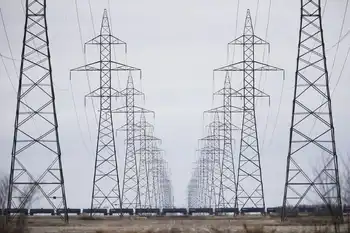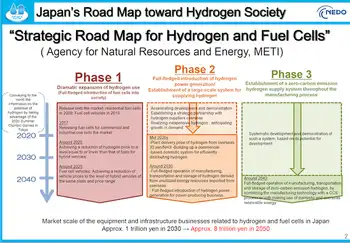Electric ATV maker hopes to tap farmers market
By Associated Press
Substation Relay Protection Training
Our customized live online or in‑person group training can be delivered to your staff at your location.

- Live Online
- 12 hours Instructor-led
- Group Training Available
While automakers are toiling to produce electric cars that will fit the demands of American drivers, Ashland-based Barefoot Motors is on the verge of turning out heavy-duty ATVs that can go 50 miles on a charge costing about 90 cents.
"I think a lot of attention is focused on the more glamorous vehicles — the cars," said Chief Executive Max Scheder-Bieschin. "But there are lots of other applications where the strength of the technology can be focused."
Debby Zygielbaum, vineyard manager at organic Robert Sinskey Vineyards in Napa, Calif., test-drove an early Barefoot prototype last year and is eager to be an early adopter when production starts in June. She'd like to haul her spraying equipment without fogging the vines with exhaust fumes, and the ATV could get free power from the vineyard's solar panels.
"It's becoming feasible where it will actually become a working vehicle to use in the field," she said.
The Barefoot ATV's $12,000 price is 50 percent higher than a heavy-duty gas-powered ATV. But with gas around $2 a gallon and electricity averaging 11.35 cents a kilowatt-hour nationally, the cost evens out over seven years if a farmer drives 5,000 miles a year. It's even more cost-efficient for farms producing their own power from solar panels or manure digesters, and as gas prices go up.
Barefoot is not the first electric ATV coming to market. Bad Boy Buggies in Natchez, Miss., has vehicles intended for hunters. Doran Electric Vehicles in Huntington Beach, Calif., has been selling the Gorilla for years. Zap Electric Vehicles in Santa Rosa, Calif. — where Scheder-Bieschin formerly worked — has a model called the Dude coming out soon.
The high price of Barefoot's model comes from the lithium iron phosphate batteries, the same technology General Motors Corp. is putting in the Chevrolet Volt electric car. To keep the price of the Dude around $5,000, Zap had to use lead-acid batteries, which charge slower and have less power.
"I think with electric vehicles, it's going to be hard, unless you use very expensive and exotic battery technology, to match the performance and price of gasoline vehicles," said Zap spokesman Alex Campbell. "Our goal was to simply make an affordable and powerful ATV that can satisfy the majority of the needs for ATV owners."
Rick Doran, president of Doran Electric Vehicles, is also skeptical that electric ATVs will replace gas-powered machines. He said his company has sold only a couple hundred at prices around $8,000. Some have gone to underground mining operations and electric utilities where the lack of exhaust and short turning radius are a plus.
"Personally, I don't think it's practical yet," he said of the technology.
But Scheder-Bieschin said customers don't have to compromise on performance, as long as their needs fit the vehicle. Farms smaller than 1,000 acres are perfect. The vehicle can work the morning, get recharged at lunch, and go back out in the afternoon, all while staying close to their power source.
"Our goal is not necessarily to replace all the million ATVs sold every year," he said. "There is room for a different technology. There may be people who love their noise, who love their Harleys. But a guy going up and down the rows of a vineyard doesn't like the noise, doesn't like the fumes. If we can get 10,000 of those guys every year we'll be happy."
Albert Straus, president of Straus Family Creamery in Marshall, Calif., is so into sustainability that his milk is sold in glass bottles, he uses methane gas from his cows to produce electricity and hot water, and he drives an electric Toyota RAV4 EV.
"My goal has been to get away from fossil fuels as much as possible," he said.
But he finds it hard to justify the expense of buying an electric ATV for gathering cows and fixing fences until there are tax incentives.
"I think if we can get the government and society backing this type of technology, it is going to make things happen a lot faster," he said.
Barefoot's majority owner, Mary Jo Gresens, said the company plans to start slowly, producing 120 vehicles in the first year and growing with the awareness of global warming.
"Up until now, the ATV market has concentrated on fun, sport kinds of things," said Gresens, a Detroit native who has worked in the automotive industry in the U.S. and Europe. "We're not that vehicle."
Barefoot's first prototype was a stock utility ATV retrofitted with golf cart batteries. But engineers Dave Mounce and Eli Schless have put the production model together from the ground up, taking care to reduce drag from things like brakes and improve efficiency from the drivetrain and steering, which translates into greater range.
"We're talking about a Yugo versus a Ferrari as far as the level of technological difference," Mounce said.
Components will be outsourced — batteries from China, most of the rest from the U.S. — and assembled in Ashland. Barefoot expects to expand its staff from five people to as many as 15 when production gets going.
The company started in Santa Rosa, Calif., in 2007, and moved to Oregon to be closer to the growing organic farming and vineyard market and take advantage of Gov. Ted Kulongoski's efforts to promote green energy.
Current tax credits for electric vehicles apply only to on-road vehicles, but the budget pending in the Legislature would go even further to promote renewable sources of electricity, particularly solar, said Jillian Schoene, a spokeswoman for the governor.











